|
Circa 1996
0 Comments
Circa 2000 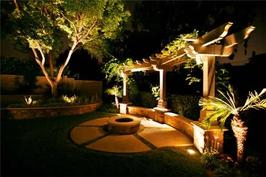 Uplighting - the most dramatic form of lighting. Surface or direct burial fixtures are mounted in the ground and aimed upwards to illuminate trees, statues, walls, etc... 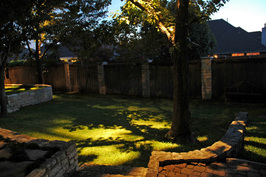 Moonlighting or downlighting - by placing fixtures in trees and casting the light down a natural light is created emphasizing paths, stairs, driveways, etc... 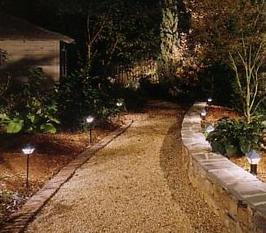 Path lighting - low level lighting for walkways, patios, and plant beds. Two types of lighting fixtures are used. The "spread" path light has the bulb hidden under the fixture top so it acts like a downlight. The "globe" or "glow" pathlight has a glass side or a globe that houses the bulb. beware, too many pathlights too close make your landscape look like an airport runway.  Grazing - with this lighting technique the texture of a surface-stone or brick wall or tree bark - can be highlighted. A fixture is placed a few inches from the surface and grazing the light to reveal contours and textures. 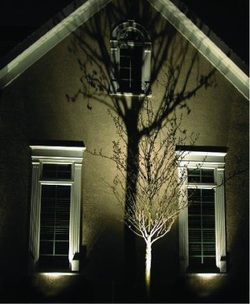 Shadowing - a technique that uses shadows to create interest. A fixture placed in front of a plant shown through it casts shadows onto the wall.  Silhouette or backlighting - when silhouetted against a wall or building, trees, shrubs or statues with interesting shapes can be dramatic accents. By placing a lighting fixture between a focal point and the wall the shape of the subject will be outlined. Landscape and facade lighting provides added security. Circa 1996
Purple Wintercreeper ( Euonymus fortunei coloratus ) Introduced into the United States in 1914 from Japan, Purple Wintercreeper is a very versatile and hardy ground cover. In the winter this evergreen's dense carper of plum-purple provides a contrast of color and texture. Purple Wintercreeper is good for rambling over tree stumps and barren rocky spots. Purple Wintercreeper requires very little maintenance. Soil: Almost any, wet or dry, well-drained Light: Full Sun or Light Shade Pruning: May be done at anytime, responds well to shearing Uses: Low hedge, ground cover, vine, foundation plantings, controls erosion on steep banks. Circa 1997 Spring, 1975 - age 11
While riding home from Sunday morning mass with Dad, Mom, Grandpa, and Grandma, a fancy landscape truck, trailer and tractor passed by us at Post and Washington. I mentioned to everyone that that's what I want to do. Summer, 1976 Dan Stoeffler and I started collecting old lawn mowers and motors storing them in his dad's garage nest to the Cumberland Post Office. One old mower was hauled out of Lake Freeman after it was drained that fall. We never made any money repairing mowers but we sold our whole inventory for $120.00 1976 was also the year that Dad bought our first riding mower that he allowed me to use. I mowed 3-6 lawns per week. When winter arrived I bought my first snow plow for the mower. Summer, 1978 - age 14 Dan Stoeffler, Jon Morris and I started working for Dennis Fisher mainly doing lawn maintenance. We all pushed mowed 8-10 hours per day for $2.50 per hour. We had a lot of fun traveling around the city all day but we worked like men. Spring, 1979 - age 15 I borrowed $1,500.00 from the bank to purchase my first mower. I mowed for my regular customers and worked as a subcontractor for Dennis for $10.00 per hour. This was the first time self-employment came to mind. Fall, 1979 After lying about my age, I was hired by Harlan Industries ( the "rat factory"). I worked from 4:00 - 11:00pm daily. I liked the money but I should have been studying and socializing. I bought my first truck that year - a 1967 Bronco. Summer, 1980 - age 16 I basically worked for myself mowing lawns and doing whatever. Fall, 1980 I sold the Bronco and bought a 1977 F150 4x4 and snow plow. I also enrolled in a horticulture program at Walker Career Center taught by Mr. Phil Pitts. Summer, 1981 I continued working for myself. Fall, 1981 I continued in horticulture January, 1982 I graduated mid-term, landed some more accounts, bought three walk-behind mowers, and hired my first employees. And the rest is Ski Landscape history. Special thanks to all of you who have made my dreams come true, John P. Wolski In ancient times, Egyptians dyed eggs as a rite of spring. People in Persia gave each other gift eggs to celebrate spring. The custom of dying eggs was probably brought to Europe by the Crusaders and was expanded in Germany to involve rabbits and hidden surprises. Until commercial dyes developed in the 19th century, people colored eggs with whatever roots, berries, leaves and flowers were available.
Some natural egg dyes include:
Mike Baker passed away yesterday evening.
He always had a friendly attitude and always said, "Hello" in the morning. It was an honor to know you, Mike. We will miss you. Our thoughts and prayers are with you and your loved ones. Circa 1995
Spring is finally here. The buds are forming on the trees. Grass is becoming greener with the rainy weather. Tulips, crocuses and daffodils are opening their flowers to the warmer days. Even though winter seems far behind us, it is still important to fee the birds.
Many birds rely on feeders to help them withstand the drastic weather changes in the spring. With spring snowstorms, occasional cold weather, and rainy days, birds often are not able to locate natural food sources which may not be available yet. The food we provide give birds the additional nourishment and energy they need for mating and nesting. Have your birdfeeders available in early spring before birds arrive home. They will need the nourishment after a long migration. And don't forget fresh water in the birdbath. After such a long flight, a bath might feel good. Circa 1995
Stella d'Oro Daylily - (Hemerocallis) This spectacular perennial is the longest blooming daylily in existence. the 8-12" "Star of Gold" blooms from June until first frost. It is low maintenance, adaptable to many environments, and very hardy. Each plant produces masses of large golden yellow ruffled flowers and has long rush-like leaves. Soil: Fertile, moist, well drained soil but heat and drought tolerant. Uses: Great as a border plant, massed for accent or in natural plantings. Very effective in terrace containers and rock gardens. Circa 1996
What do pines, eucalyptus, magnolias, spruces and azaleas have in common? They are all part of the evergreen family. An evergreen is a plant that holds its foliage even when it is dormant, or resting, in winter. They are very hardy plants that can be grown anywhere in the United States. Evergreens require very little maintenance other than pruning occasionally to keep their shape and size. They are resistant to most insects and diseases and are the perfect answer to a lot of landscaping problems. There are two classes of evergreens. The narrow-leaved evergreens with needle-like leaves, include pines and spruces. They are also known as conifers because they carry their seed in cones. Conifers thrive in cold climates because their needles lose moisture at a slow rate during cold weather. Conifers include a few that aren't evergreens such as larch, bald cypress and dawn redwood. They lose needles each fall like oaks and maples and are called deciduous conifers. Broad-leaved evergreens whose leaves are wider, are found mostly in the south and include such plants a rhododendrons and magnolias. These evergreens do better in warm areas where moisture is more available and there is no frost. Evergreens serve many purposes. They shield homes from winter winds while shading from summer sun. They flourish in places where grass won't grow. Evergreens act as a screen for headlights and noise. They also add interest to a landscaped area. Not all evergreens are green. Depending on age, variety and season they can be shades of yellow, blue, gray, bronze, or deep purple. Berries and pine cones also add interest and color to a bleak winter day. Evergreens give landscapes a richness, a warmth, an elegance, and an assurance that spring with return someday soon. |
AuthorsCurrent and former staff members have contributed to our newsletter over the years. Now the articles are available to view here on our blog Categories
All
|
© 2024 Ski Landscape Corporation - Website by Day Design


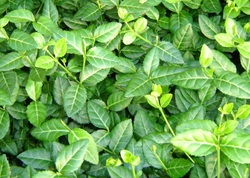

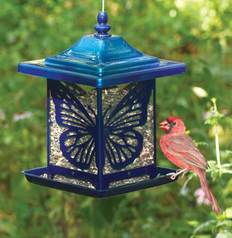
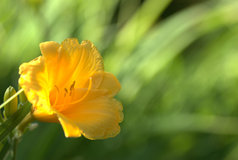
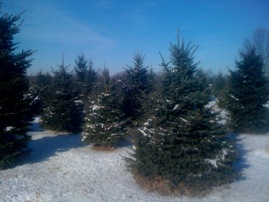
 RSS Feed
RSS Feed